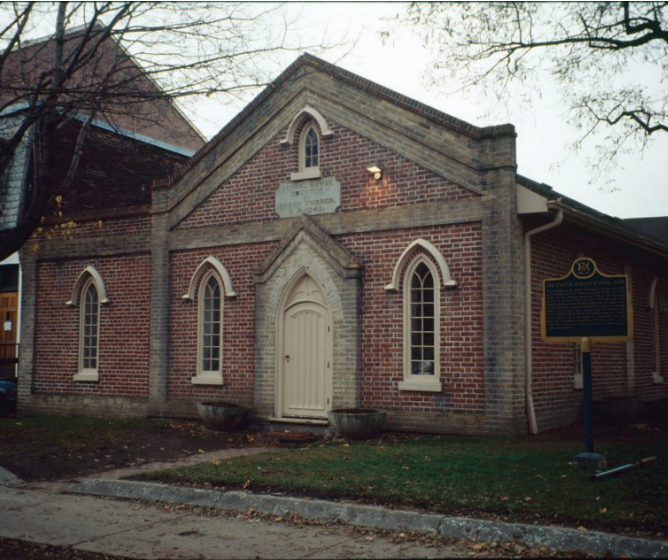Bruce Bell, Senior Columnist

St Lawrence Hall, built in 1850 on King Street East, has a remarkable relic from our past; a large oval table on its 3rd floor once used by the Toronto School Trustees.
In 1871 the trustees gathered around that table (then at a different location) and voted to make school mandatory, thus changing forever the lives of thousands of local children.
In the early 1800’s, going to school in the Town of York was a luxury few parents could afford. The Home District School (1807-1812) that once stood on the south east corner of King and George Streets, cost $16 a year in a time when a teacher’s annual salary was $20.
The first teacher Rev. George O’Kill Stuart taught the sons and daughters, ages 6-19 of the well established families of York. The school became Duggan’s General Store in 1812 and was demolished in 1873. (There is a plaque on the current building that commemorates the Home District School).
However, in 1818 the establishment of a Common (elementary) school by government grants was introduced into York with the first school opening for the sons and daughters of the working class. Mr. Thomas Appleton was its first schoolmaster. In 1820 the school was commandeered by the Upper Canada Central School System and would later evolve into the still operating Jarvis Collegiate.
In 1820, a new schoolhouse opened where the giant maple tree now stands just outside the shoe repair shop in the laneway that separates the Metro Store from the HotHouse restaurant between King and Front streets. The Market Lane Common School was a small 2 story wooden structure that sat in the middle of an orchard surrounded by a white picket fence. Amazingly as it seems today, the students could gaze at an unobstructed view of the comings and goings in the harbour, which then was a few yards away just south of Front Street.
The school shared the premises with a Masonic Hall, and it was in that hall on the second floor that the Mechanic Institute, the forerunner to the Toronto Public Library system, was first formed.
By 1844 school was still not compulsory but it was open to anyone who wanted to go (providing there was room and a teacher). This included the sons and daughters of the men who worked for the brewer Enoch Turner, who built the still standing schoolhouse on Trinity Street for their education.
Sadly, the majority of children in Toronto had a worse alternative that was less than voluntary; grueling full time mill and factory work.
During the height of the Industrial Revolution that was sweeping its way through Toronto from 1850 onward, the horrors of child labour were making their face known in the factories, slaughterhouses and mean streets of our fair city.
As early as 1832, British MP Michael Sadler secured a parliamentary investigation of working conditions in the textile factories and later delivered a shocking report of child labour practices to British Parliament.
The immediate effect was the passage of the Act of 1833 limiting hours of employment for children between the ages of 9 and 13 to a more ‘reasonable’ 9 hours a day in textile mills throughout Britain. This was soon followed by Canada that same year.
By the 1870’s huge menacing iron and steel factories were built by the mouth of the Don River where school age children, already hardened by the time they reached their teenage years, were working in backbreaking, dangerous, toxic and tedious jobs.
Something had to be done to help the greater part of these illiterate youth to have a chance at a better life.
The motto for the men that sat around the oval table, which is now in St. Lawrence Hall, was “the truth shall make you free”. With that in mind, the School Act of 1871, making school mandatory for every child under the age of 16, was passed.
There were many obstacles that were to follow, including the horrific Residential School System, but eventually our modern school system with fair equity for all would be born.



